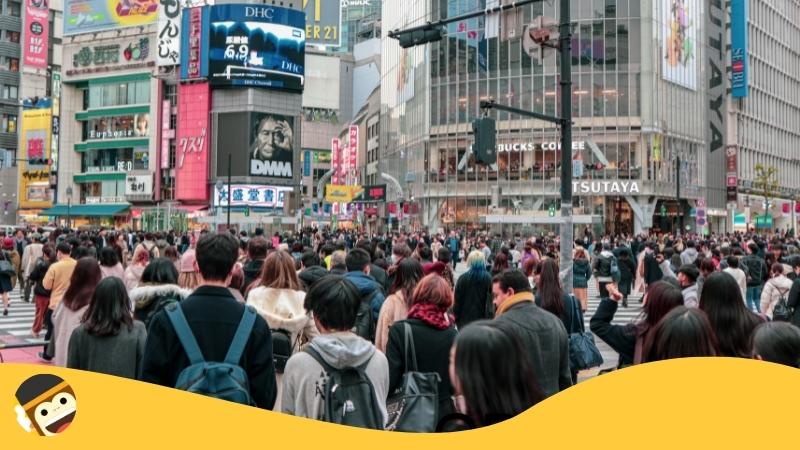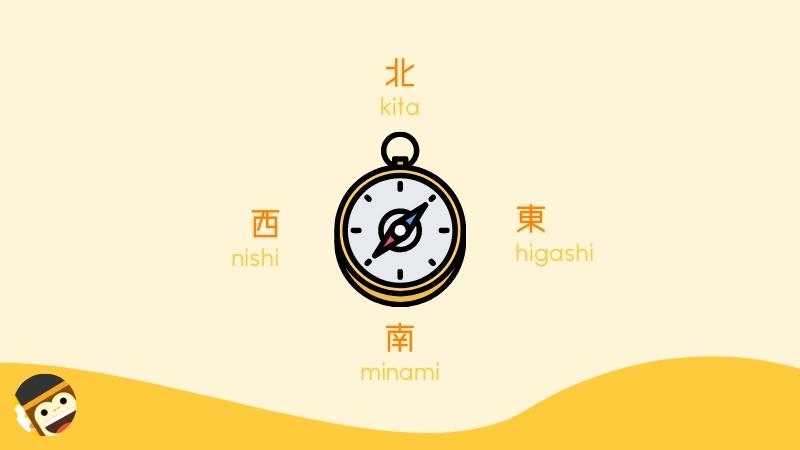What would you do if you were lost in Japan? The best choice is to ask for guidance from locals, but do you know the directions in Japanese? No? Then you must read this article!
First time in Japan? I’m sure you have a long list of to-dos in the fantastic cities of Japan, including Tokyo, Kyoto, and Osaka… but try not to get lost while walking around the mesmerizing streets of Japan. However, if you happen to find yourself lost in the middle of a chaotic crowd and you aren’t the most fluent Japanese speaker on Earth. What will you do?
Will you call your mom and dad? Absolutely NO! It’s the worst thing to do unless you want your parents to question your adultness by letting them know you got lost overseas.
So, the most accurate thing to do is not to freak out and ask for help from local Japanese people. It would be beneficial if you asked for directions in Japanese, even though you can’t speak Japanese well.
No worries, because you’ll find all the needed Japanese vocabulary in this guide to directions in Japanese! Hopefully, you’ll understand the importance of learning Japanese before you set off to Japan because there are no subtitles in real life!
Page Contents:
- Why Should I Learn How To Ask For Directions In Japanese?
- Tips For Approaching A Japanese Person To Ask Directions
- Must-Know Direction Words In Japanese
- Cardinal Directions In Japanese
- Landmarks In A Typical Japanese Town
- Asking For Directions Inside A Building
- Must-Know Phrases To Ask & Receive Directions In Japanese
- Asking For Directions In Japanese With Your Phone
- Learn Japanese With The Ling App!
Why Should I Learn How To Ask For Directions In Japanese?
Honestly, I’m terrible at finding any location on my own, so I usually travel with my friends to ensure that I won’t be lost. If I’m alone, Google Maps becomes my best fellow traveler.
However, as a traveler, you are likely to find yourself in a situation where you can’t reach out to your phone; you may run out of battery, or you may not have access to the internet. These are the times that you’ll thank God for knowing compass directions.
But since you’re in Japan, you’ll also need to know directions in Japanese in addition to compass directions because you need to understand the Japanese language when local people guide you with directions.
You’re lucky to read this article right now because we’ll help you master directions in Japanese! Let’s spend no more time and learn how to approach someone in the best way to ask for help and find your route.
Tips For Approaching A Japanese Person To Ask Directions

Japanese people are known to be reserved, meaning they may hesitate to have a conversation with foreigners at first. So here are some tips for looking more approachable and speeding up the process.
Be Approachable
People make a first impression about you before you even open your mouth to talk to them. It’s body language and appearance. Nobody wants to come and talk to a sulky person, so all you have to do is straighten your spine, relax your hands, and smile.
Use Basic Words And Phrases
If it is obvious that the person in front of you doesn’t speak English, it is your turn to speak Japanese. However, make sure to use basic words to indicate that your Japanese level is a beginner so that the other person will try to simplify their speaking in return.
Watch Out For The Keywords
You probably won’t be able to understand everything they say in Japanese. So you should try to catch the words you know or pick out the crucial keywords that will help you find your route.
Don’t Hesitate To Ask The Speaker To Repeat
Asking someone to repeat what they said is totally okay, but we usually hesitate to do that since we’re afraid to look ridiculous. If you pretend to understand, it will help no one, right?
Must-Know Direction Words In Japanese
Here is the list of directions in Japanese.
Cardinal Directions In Japanese

Here is the list of cardinal directions in Japanese, also known as compass directions. If you’re a traveler or adventurer, you should always have your compass.
Landmarks In A Typical Japanese Town
Local people usually give directions based on the landmarks in neighboring, so it would be beneficial to add these essential landmarks to your Japanese vocabulary.
Asking For Directions Inside A Building
Don’t think only about getting lost in the streets. Japan is home to many huge buildings where it’s easy to lose your way when you only try to go to the restroom. So here is a list of useful words to ask for directions inside a building.
| English | Japanese | Hiragana/Katakana | Romaji | Pronunciation |
|---|---|---|---|---|
| entrance | 入口 | いりぐち | iriguchi | |
| exit | 出口 | でぐち | deguchi | |
| restroom | トイレ | toire | ||
| stairs | 階段 | かいだん | kaidan | |
| elevator | エレベーター | erebētā | ||
| gate | 門 | もん | mon | |
| parking lot | 駐車場 | ちゅうしゃじょう | chūshajō |
Must-Know Phrases To Ask & Receive Directions In Japanese

Here are some basic phrases to start a conversation with a local person to ask for help. You’ll also need these phrases to clearly understand someone while receiving directions.
すみません (sumimasen)
Meaning: Excuse me.
The best way to approach someone is to offer an excuse for interrupting since you can’t get right down to it. This way, you will get the person’s attention before talking. You can clarify your intent after saying すみません (sumimasen).
ちょっといいですか (Chotto ii desu ka)
Meaning: Can I talk to you a bit?
Asking permission before taking up someone’s time by talking is a very polite thing to do, and it indicates that you want to talk to them about something, which may take some time.
助けてもらえますか (Tasukete moraemasu ka)
Meaning: Will you help me?
You can let someone know that you need a helping hand by saying 助けてもらえますか (tasukete moraemasu ka). So you’re basically asking for help from someone with this phrase.
__はどこですか (__ wa doko desu ka)
Meaning: Where is __?
This is the most common phrase to ask where something is in Japanese. You should add the object or location that you’re looking for before the particle は (wa).
__にはどうやって行けばいいですか (__ ni wa dō yatte ikeba ii desu ka)
Meaning: How do I get to __?
If you want to get somewhere but don’t know how, you can use this phrase to ask someone. You should add the location before the particle に (ni).
__はどの位遠いですか (__ wa dono kurai tōi desu ka)
Meaning: How far is __?
When you don’t know how far somewhere is to your current location and hence can’t decide whether to walk or take a taxi, you can use this phrase to ask someone and decide accordingly.
分かりました、ありがとうございます (wakarimashita, arigatō gozaimasu)
Meaning: I see, thank you.
When the conversation is over, you should thank them for their help. 分かりました (wakarimashita) means that you understood everything clearly and ありがとうございます (arigatō gozaimasu) is the most common way to say thank you in Japanese.
The following phrases in the list below are must-know phrases when receiving directions in Japanese.
Asking For Directions In Japanese With Your Phone

It makes things easier if you’re lucky enough to have your phone. Perhaps you know where you want to go but don’t know its original Japanese name. In that case, you can still get help from the local Japanese people.
Please type the name of __ on my phone.
Romaji: watashi no denwa ni __ no namae o utte kudasai.
You’ve seen a beautiful photo spot in Tokyo but don’t remember where it is. If you’re in this situation, you can describe that spot to a local person, and they can find where it is located for you.
Can you find __ on Google Maps, please?
Japanese: __をグーグルマップで探してくれませんか。
Romaji: __ o Gūguru Mappu de sagashite kuremasen ka.
Or similar to the situation above, you can ask them to enter the Japanese name of a particular location on Google Maps then all you have to do is follow that route.
After reading this article, you may have decided to learn more Japanese vocabulary for your next trip to Japan, so why don’t you download the Ling App right away?
Learn Japanese With The Ling App!
If you want to learn the Japanese language or any other 60+ languages offered in the app, then you should try the Ling App!

Ling is a language learning app designed to help all language learners. It offers many engaging activities ranging from writing and listening exercises, mini-games, and quick quizzes, to an AI chatbot to practice speaking with. The Ling App is the best all-in-one language learning resource for you.
Also, don’t forget to visit our Japanese blog weekly to learn more about the Japanese language and culture!
The Ling App has everything you need to master core language skills. You can try it out for FREE today by downloading it from the App Store or Play Store.
Start learning Japanese or another new language by downloading the Ling App today!
Until next time, じゃあまたね!































































